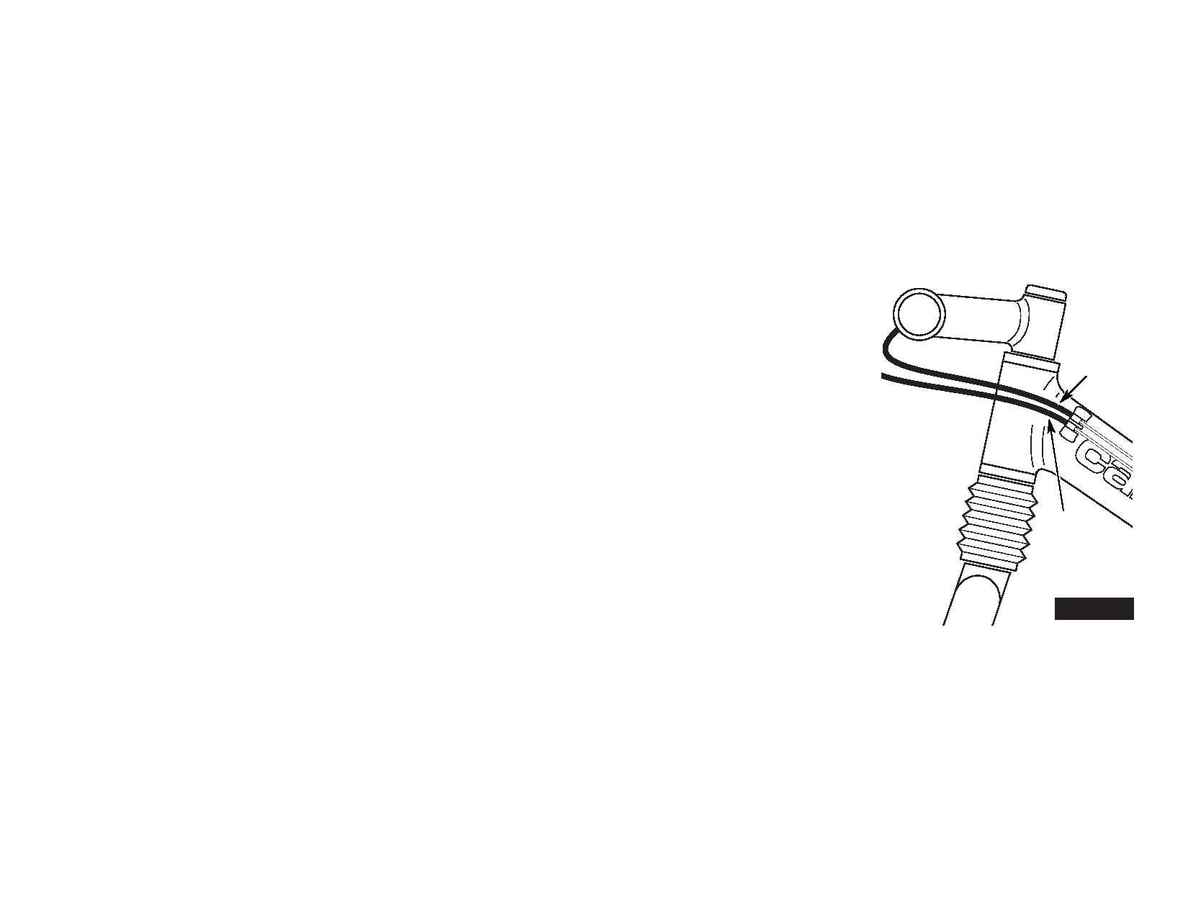
5.
CABLE ROUTING
The cables on the Super V must be routed correctly to ensure proper opera-
tion of the derailleurs and brakes, and to prevent the cable housing from
being pinched when the rear suspension is compressed. Also, be sure to use
lengths of cable housing which will not impede steering control and will not
contact wheels or tires. Based upon the type of Super V you have purchased,
see the appropriate section below for cable installation instructions.
ALUMINUM SUPER V CABLE ROUTING
FRONT BRAKE
Run cable housing or hydraulic
line directly from the front brake
lever to the front brake.
REAR BRAKE
Run cable housing from the rear
brake lever to the lower slot in the
double housing stop on the left side
of the down tube (see Fig. 2.) Run
exposed brake cable to the housing
stop on the downtube near the rear
shock mount. Run cable housing
from this housing stop on the down-
tube to the rear brake. If using
hydraulic brakes, run hydraulic
line directly from the rear brake
lever to the rear brake, securing
the line to the frame with the hard-
ware supplied with the brake.
FRONT DERAILLEUR
Run cable housing from the front shifter to the housing stop on the right side
of the downtube. Run exposed cable to the housing stop a the lower end of
the downtube. Run cable housing (approx. 38cm.) from this downtube stop,
through the housing guide under the bottom bracket to the housing stop on
the swingarm just behind the rear suspension pivot. Be sure to leave enough
slack in this piece of housing to allow for the movement of the swingarm.
It is easiest to first position the housing into the stop on the swingarm, and
then to run the cable through the housing and out the hole towards the front
derailleur.
Rear Brake
Rear
Derailleur
Fig.2 v
4.
SWINGARM PROTECTOR
The swingarm on your Super V is made of thin wall aluminum tubing and
some CNC-machined aluminum parts. To protect the CAAD 4 swingarm
(found on some Raven models) from damage inflicted by the chain slapping
against the chainstay, we have supplied a self-adhesive vinyl protector for the
swingarm. This protector should be applied to the top of the right (drive side)
chainstay, near the chain. Please inspect this protector frequently. If the
protector becomes damaged, abraded, or peels off, it should be replaced to
prevent damage to the swingarm. To obtain a new swingarm protector, see
an Authorized Cannondale Retailer. The elevated swingarm doesn't have
a traditional "chainstay", but the protector can be applied to the bottom of
the drive side to protect the paint from chain slap.
ALTERNATIVE BRAKES
Hydraulic brakes are a popular upgrade on many suspension bicycles. When
selecting a hydraulic brake system for your Super V, choose one that mounts
to the frame using only the existing cantilever brake studs or disc brake cali-
per mounts. Do not attempt to modify the existing cantilever brake studs
or to clamp, weld, or to in any other way add new or different mounts for a
hydraulic brake or disc brake. Any attempt to modify the frame, swingarm,
fork, or related components will void the warranty and may weaken or dam-
age the frame. For installation instructions and other warnings, refer to the
literature provided by the brake's manufacturer. The mounts on the Super V's
swingarm and fork are designed to fit a CODA Compact disc brake caliper.
Other brands of disc brakes which conform to the international mounting
standard may fit as well.
WATER BOTTLE USE
Do not use a large water bottle (taller than 8" [20cm]) in a water bottle cage
on the underside of the Super V Raven frame if you are also using the new
Lefty fork. With the fork fully compressed, a large bottle may interfere with
a front wheel mounted to the Lefty, with risk of losing control of the bicycle.
If you lose control of the bicycle you risk a serious crash and possible injury
or death
.
If in doubt about using a specific water bottle, perform the following test:
First, remove all air from the air spring Schrader valve at the bottom of the
fork leg. While keeping the Schrader valve depressed, fully compress the
Lefty to the bottom of its travel. With the fork fully compressed, make sure
that the water bottle and/or water bottle cage do not interfere with the front
wheel. When done, re-inflate the air spring on the Lefty.
